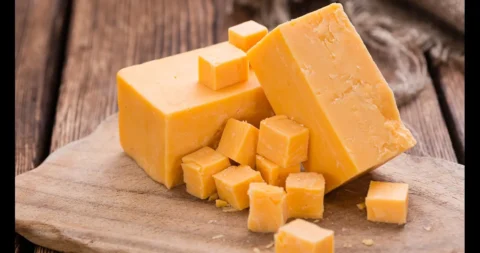Introduction to skull drawing
Skull drawing is an intriguing blend of art and anatomy. Whether you’re a beginner or looking to enhance your skills, mastering skull drawing can elevate your artistic journey. The human skull, with its distinct shapes and shadows, offers endless opportunities for exploration. Not only does it challenge your technical abilities, but it also deepens your understanding of spatial forms.
Imagine capturing the intricate details of the skull while unravelling its mysteries on paper. This guide will equip you with essential tips and techniques to help you navigate the complexities of skull drawing. Get ready to unleash your creativity as we embark on this artistic adventure together!
The importance of understanding skull anatomy
Understanding skull anatomy is crucial for anyone interested in drawing. The skull is the foundation of facial features, and knowing its structure can dramatically improve your artwork.
Each bone’s unique shape influences how we perceive form and proportion. Familiarity with these shapes helps you capture accurate details in your drawings.
Additionally, comprehension of underlying structures aids in achieving realism. It allows artists to create lifelike shadows and highlights, making the skull appear three-dimensional on paper.
Anatomical knowledge also fosters creativity. Knowing how bones interact allows you to experiment more freely with angles and perspectives without sacrificing accuracy.
This understanding enhances technical skills and deepens appreciation for the complexity of human anatomy. Delving into this subject will give you insights that elevate your artistry to new heights.
Basic materials needed for skull drawing
To start your skull drawing journey, gather a few essential materials. A good quality sketchbook is crucial. Choose one with smooth pages for easy pencil application.
Next, invest in a set of graphite pencils. Ranging from 2H to 6B will give you the versatility for different shading techniques. Each pencil grade offers unique qualities that help capture fine details and depth.
Remember, an eraser! A kneaded eraser works wonders for subtle corrections and highlights while maintaining the integrity of your paper.
Consider blending stumps or tortillons. These tools help create smoother transitions between shades and add realism to your artwork without harsh lines.
With these basic supplies ready, you’re on your way to mastering skull drawing. Grab them and let creativity flow as you dive into this fascinating art form!
Step-by-step guide on sketching a realistic skull
Begin with a simple oval shape for the skull. This will serve as your base. Lightly sketch it so you can easily erase any mistakes.
Next, add guidelines to help place facial features accurately. Draw a vertical line down the centre and a horizontal line across the middle of the oval. These will guide your proportions.
Next, focus on the eye sockets, which should be large and deep-set. Sketch them using rounded shapes that create an intense look.
Add in the nasal cavity as a triangular form below the eye sockets. Ensure it’s centred on your vertical guideline.
For teeth, draw an arc along the bottom of your oval, marking where they’ll go—simple blocks work well at this stage.
Refine all lines into more defined curves and angles, capturing those unique contours of human anatomy while keeping everything proportional and realistic.
Shading and adding details to your skull drawing
Shading is a vital component of creating depth in your skull drawing. Start with a light touch to lay down the foundation. Gradually build up darker areas where shadows naturally occur, such as beneath the cheekbones and around the eye sockets.
Use different pencil grades for varied effects. Softer pencils provide richer blacks, while harder ones create fine details. Blending stumps or tortillons can help smooth transitions between shades.
Adding details enhances realism. Focus on textures like cracks or grooves in the bone structure. Don’t forget about highlights; they can be just as important as shadows, giving your drawing that extra pop.
Step back occasionally to assess balance and contrast throughout your piece. This perspective will guide you in making necessary adjustments without losing track of your vision.
Tips for creating depth and dimension in your drawing

Creating depth and dimension in your skull drawing can elevate it from flat to lifelike. One effective method involves using varying line thicknesses. Thicker lines indicate shadowed areas, while thinner lines define lighter sections.
Another key technique is layering your shading. Start with a light base and gradually build up darker tones. This gradual transition creates a sense of volume that draws the viewer’s eye.
Remember perspective! Adjusting the angle of specific features, like the cheekbones or jawline, helps convey depth. Experimenting with foreshortening gives an impression of three-dimensionality.
Consider incorporating negative space into your composition. The spaces around and between objects play a crucial role in how we perceive depth, enhancing the realism of your artwork without overwhelming details.
Common mistakes to avoid in skull drawing
Many beginners make the mistake of rushing through proportions. A skull’s structure relies heavily on accurate measurements. Take your time to ensure each section is correctly sized and positioned.
Another frequent error is paying attention to the underlying shapes. The skull can be broken down into simpler forms, such as spheres and cylinders. Understanding these will enhance your overall accuracy.
Failing to observe the light source also hampers depth in your drawing. Shadows play a crucial role in making your artwork feel three-dimensional. Pay attention to where light hits the surfaces.
Avoid over-detailing too soon. Focus on getting the basic outline before adding intricate features like teeth or cracks. This approach helps maintain balance throughout the piece, allowing for more refined details later on without losing sight of proportion.
Utilizing different styles and techniques for unique skull drawings
Exploring various styles can breathe life into your skull drawings. Experimenting with realism is a great starting point, but add some flair by incorporating abstract elements. This can give your work an intriguing twist.
Watercolour techniques can also enhance the visual impact. Use soft washes to create ethereal effects around the skull, allowing colours to bleed seamlessly together. It adds a layer of mystique that traditional pencil sketches may lack.
For those who prefer bold statements, try pop art influences. Bright colours and sharp outlines transform the skull into a vibrant focal point, making it stand out in any collection.
Don’t shy away from mixed media, either! Combining charcoal, ink, or pastels opens up endless possibilities for texture and depth in your pieces. Each medium brings unique qualities that enrich the overall composition of your drawing.
Inspiration from famous artists and their skull drawings
The world of art is rich with inspiration, especially when it comes to skull drawings. Renowned artists like Vincent van Gogh and Pablo Picasso have explored this subject uniquely.
Van Gogh’s still life paintings often feature skulls, capturing the transience of life. His bold brush strokes and vibrant colours breathe vitality into what might otherwise be morbid subjects.
In contrast, Picasso offers a cubist interpretation that breaks down forms into geometric shapes. His approach invites viewers to see beyond traditional representations of skulls, prompting deeper contemplation on form and perspective.
Contemporary artist Damien Hirst takes another route by incorporating real skulls into his work. This shocking element challenges conventional boundaries between art and reality.
Looking at these varied interpretations can ignite your creativity. Each artist’s vision adds layers of meaning, encouraging you to develop your distinctive style in drawing while embracing the essence of the human experience.
Conclusion: Practice makes
Practice makes perfect. As with any skill, the more you draw skulls, the better your results will be. Embrace the process of learning and refining your technique. Each sketch offers valuable lessons that bring you closer to mastery.
Please don’t shy away from making mistakes; they are essential for growth. Experiment with different styles and techniques to find what resonates with you. Take inspiration from renowned artists, but remember to develop your unique voice in this art form.
Keep a sketchbook handy and make it a habit to draw regularly. With dedication and practice, you’ll see significant improvement over time. Enjoy every moment spent exploring the intricate world of skull drawing, where creativity knows no bounds!









